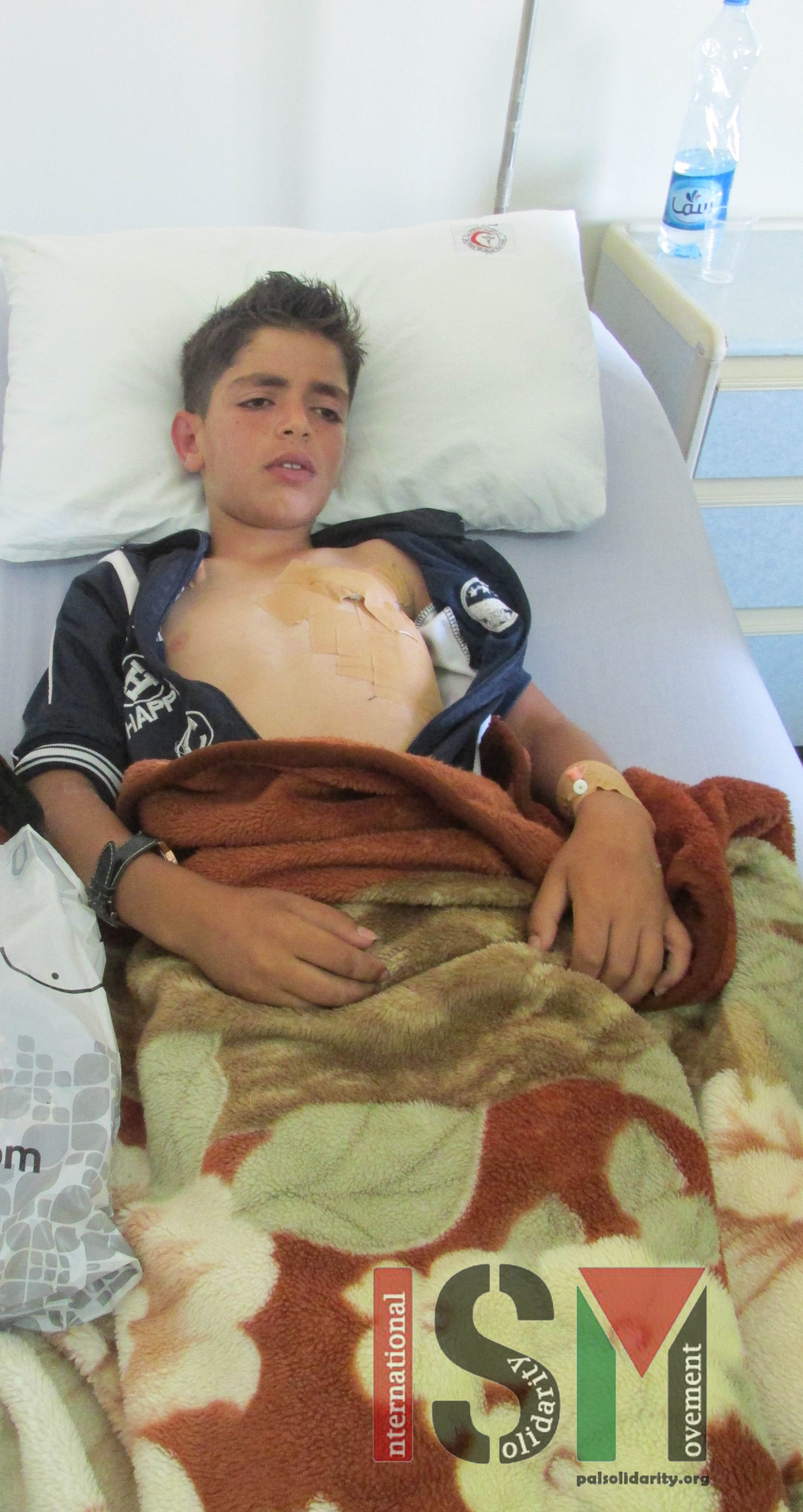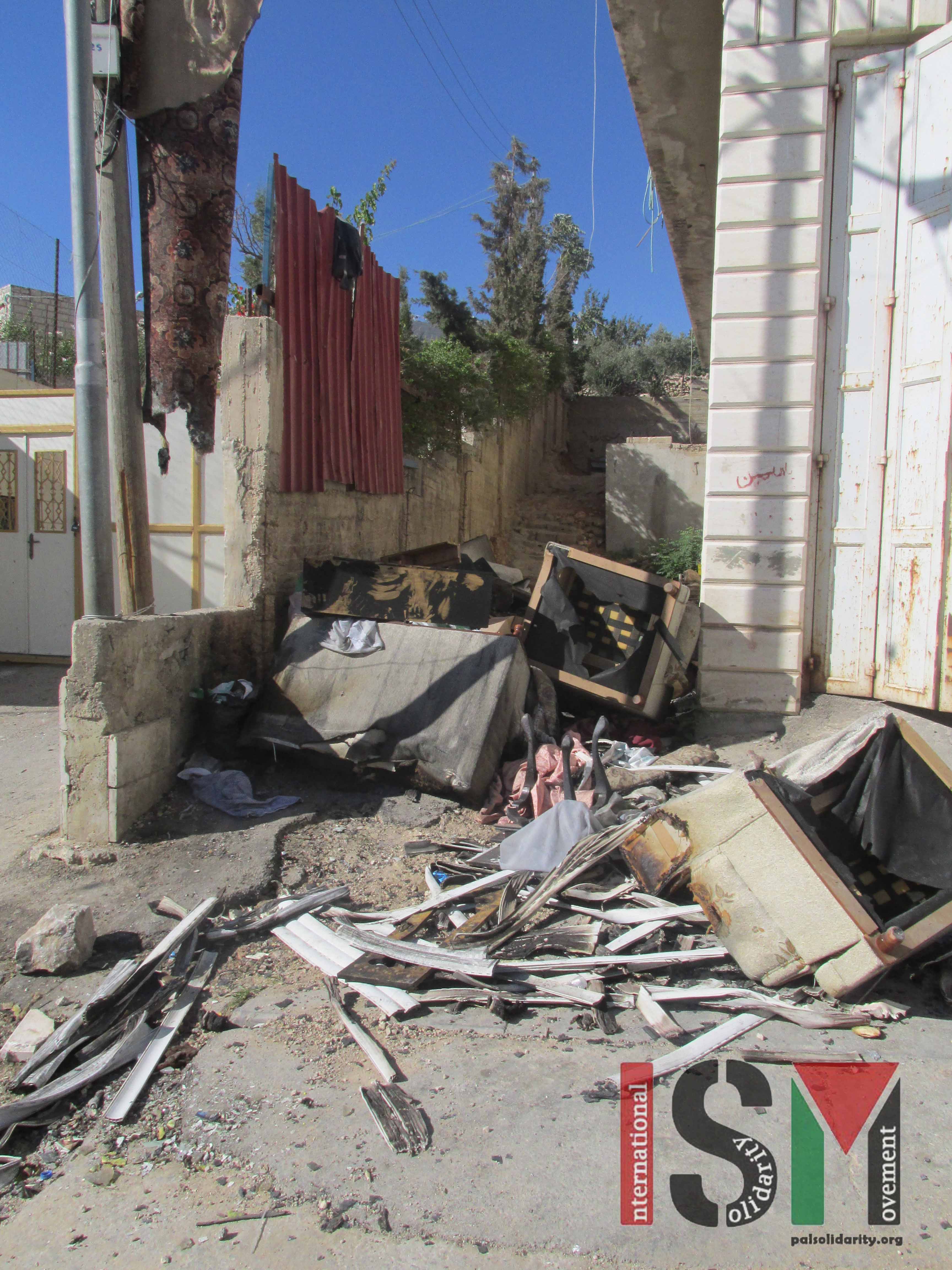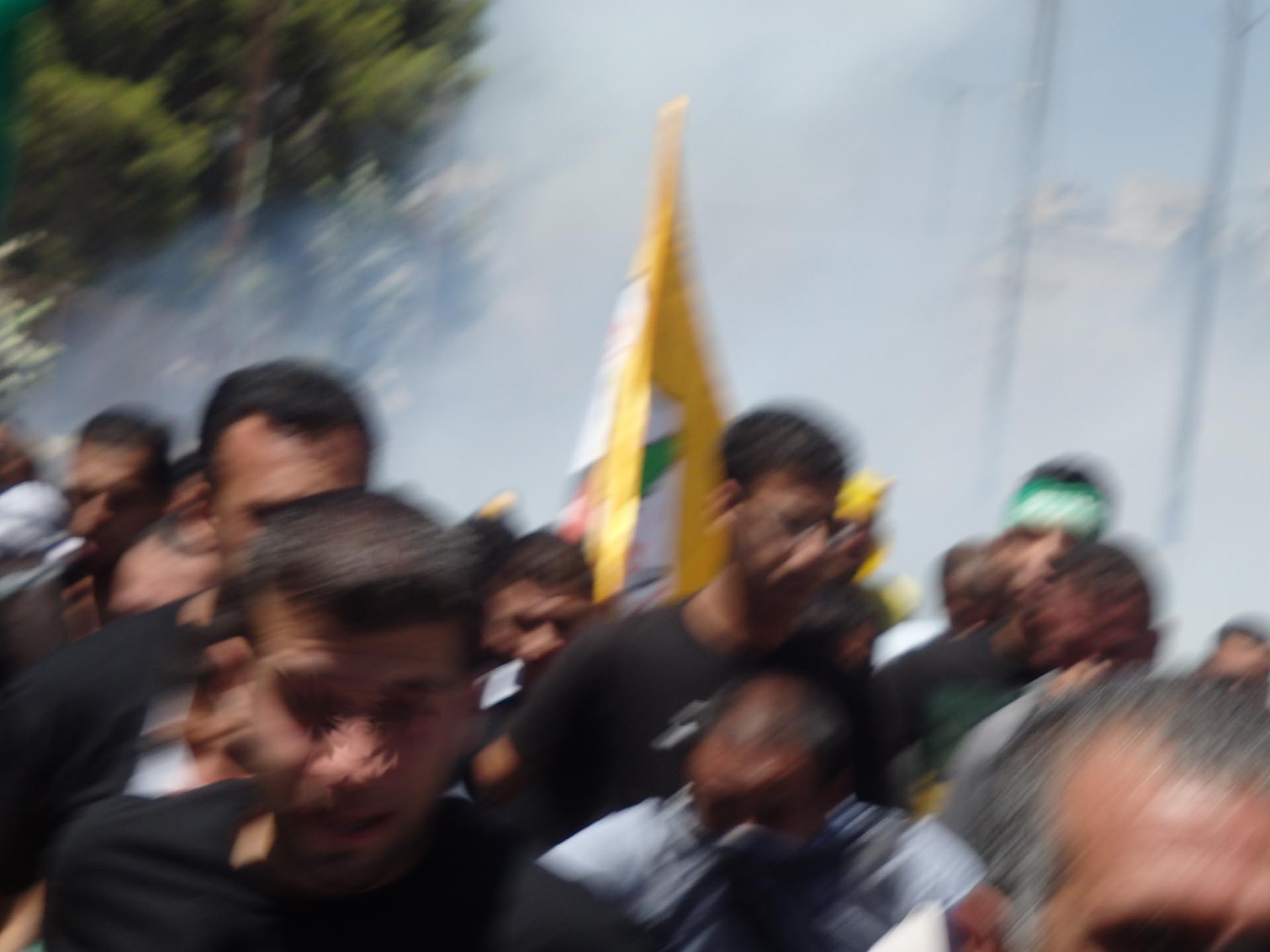Category: Reports
-
10-year-old child shot in chest with live ammunition
6th August 2014 | International Solidarity Movement, Khalil team | Hebron, Occupied Palestine In al-Khalil (Hebron) on Sunday August 3rd, a 10-year-old Palestinian boy was walking to his home near the illegal settlement of Kiryat Arba when the Israeli military shot him in the chest with live ammunition. The following day, ISM volunteers went to visit the…
-
Israeli army cause fire in Palestinian home
3rd August 2014 | International Solidarity Movement, Khalil team | Hebron, Occupied Palestine On Friday the 1st of August, at approximately 19:30 in the Gabal Gohar area of H2 (under full Israeli military civil and security control) in al-Khalil (Hebron), solders from the Israeli military caused a fire to a Palestinian apartment. The solders were shooting tear…
-
Palestinians protest in solidarity with Gaza
3rd August 2014 | International Solidarity Movement, Vern | Bethlehem, Occupied Palestine On Friday August 1st, Palestinians in Bethlehem demonstrated against Israel’s massacre Gaza. Between 3,000-5,000 people protested, men, women, and children. The demonstrators marched to the checkpoint, where they faced an Israeli guard tower. People were chanting and singing, and no one was throwing any…



